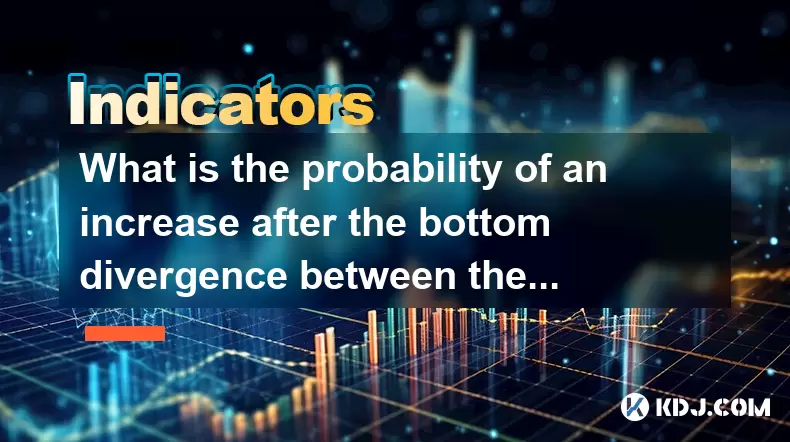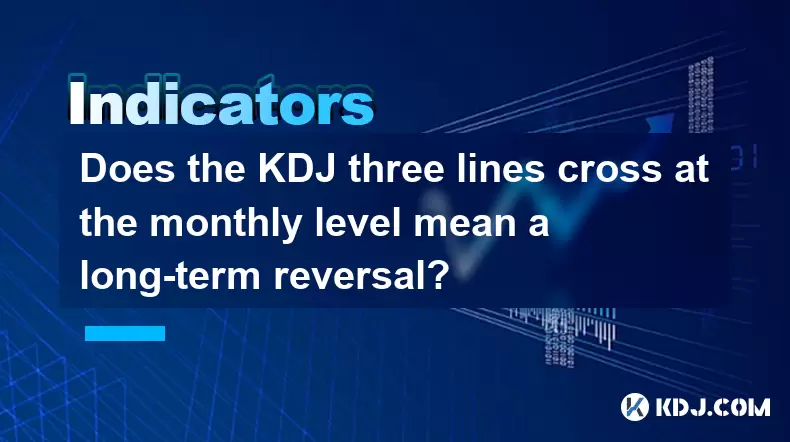-
 Bitcoin
Bitcoin $115100
-2.99% -
 Ethereum
Ethereum $3642
-1.38% -
 XRP
XRP $3.027
-5.51% -
 Tether USDt
Tether USDt $1.000
-0.05% -
 BNB
BNB $763.4
-1.32% -
 Solana
Solana $177.2
-5.42% -
 USDC
USDC $0.9999
-0.02% -
 Dogecoin
Dogecoin $0.2247
-6.47% -
 TRON
TRON $0.3135
0.23% -
 Cardano
Cardano $0.7824
-4.46% -
 Hyperliquid
Hyperliquid $42.53
-0.97% -
 Stellar
Stellar $0.4096
-6.09% -
 Sui
Sui $3.662
-2.61% -
 Chainlink
Chainlink $17.63
-3.57% -
 Bitcoin Cash
Bitcoin Cash $536.3
2.94% -
 Hedera
Hedera $0.2450
0.34% -
 Avalanche
Avalanche $23.23
-3.15% -
 Litecoin
Litecoin $112.2
-1.23% -
 UNUS SED LEO
UNUS SED LEO $8.976
-0.30% -
 Shiba Inu
Shiba Inu $0.00001341
-2.72% -
 Toncoin
Toncoin $3.101
-2.44% -
 Ethena USDe
Ethena USDe $1.001
-0.05% -
 Uniswap
Uniswap $10.08
-1.97% -
 Polkadot
Polkadot $3.938
-2.77% -
 Monero
Monero $323.9
0.87% -
 Dai
Dai $0.9999
-0.02% -
 Bitget Token
Bitget Token $4.481
-1.69% -
 Pepe
Pepe $0.00001199
-5.94% -
 Aave
Aave $288.2
-0.68% -
 Cronos
Cronos $0.1279
0.36%
Should I go all in when the upper edge of the box is broken?
A breakout above a price "box" signals potential upward momentum, but traders should confirm with volume, candlestick closure, and retests to avoid false moves.
Jul 25, 2025 at 01:50 am

Understanding the "Box" in Cryptocurrency Price Charts
The term "box" in cryptocurrency trading typically refers to a price consolidation range where the asset trades between a defined support level and a resistance level. This pattern appears as a horizontal rectangle on price charts, especially when using candlestick or line graphs. The lower edge of the box represents the support — a price level where buying pressure tends to overcome selling pressure. The upper edge is the resistance — a level where selling pressure historically increases. When the price moves above the upper boundary, it's commonly referred to as a breakout. Traders often interpret this as a potential shift in momentum, possibly signaling the beginning of an upward trend.
What Does a Breakout Above the Box Mean?
A breakout occurs when the price of a cryptocurrency closes above the resistance level of the box with significant volume. This movement suggests that demand is overpowering supply at that price point. However, not all breakouts are reliable. Some are false breakouts, where the price briefly moves above the resistance but quickly retreats back into the box. To assess the validity of a breakout, traders analyze several factors:
- Volume spike: A genuine breakout is usually accompanied by a noticeable increase in trading volume.
- Candlestick confirmation: Waiting for at least one full candle (e.g., 4-hour or daily) to close above the resistance adds reliability.
- Retest of the broken resistance: Often, after breaking out, the price may return to test the former resistance (now acting as support). If it holds, the breakout gains credibility.
Risks of Going All In After a Breakout
While the excitement of a breakout can tempt traders to go all in, meaning to invest their entire available capital, this strategy carries substantial risk. The cryptocurrency market is highly volatile, and even seemingly strong breakouts can reverse rapidly. Key risks include: - Whipsaw movements: Prices may surge briefly due to algorithmic trading or short squeezes, only to collapse soon after.
- Lack of fundamental catalysts: If the breakout isn’t supported by news, adoption, or on-chain activity, it may lack staying power.
- Market manipulation: In less liquid altcoins, large players can artificially push prices above resistance to trigger retail buying, then sell off — a tactic known as a pump and dump.
Putting all funds into a single trade removes the ability to average in or respond to further developments. Even if the breakout is real, a sudden correction could wipe out a significant portion of capital.
Strategic Approaches to Breakout Trading
Instead of going all in, consider a structured entry strategy that balances opportunity and risk: - Partial entry on breakout confirmation: Allocate a portion (e.g., 30–50%) of your intended investment when the price closes above the box with strong volume.
- Wait for a retest: Enter additional positions if the price retests the broken resistance and holds as support.
- Use stop-loss orders: Place a stop-loss just below the upper edge of the box or the breakout candle’s low to limit downside.
- Scale in over time: Add to your position gradually as the price demonstrates sustained strength above the resistance zone.
- Set profit targets: Define multiple exit points based on Fibonacci extensions or previous swing highs to lock in gains incrementally.
This method allows you to participate in the upside while preserving capital for unforeseen volatility.
How to Confirm a Valid Breakout: A Step-by-Step Guide
To avoid falling for false signals, follow these steps before taking any action: - Identify the box clearly: Use horizontal lines to mark the support and resistance levels over a period of at least several days.
- Check volume indicators: Overlay a volume chart and look for a spike that coincides with the breakout candle.
- Wait for candle closure: Do not act on intracandle moves; wait for the 4-hour or daily candle to close above resistance.
- Monitor for re-entry: Observe whether the price remains above the breakout level for multiple candles.
- Analyze higher timeframes: Confirm if the breakout aligns with trends on the daily or weekly chart for stronger validity.
Review on-chain and news data: Look for increased wallet activity, exchange inflows/outflows, or project updates that support the move.
Executing these checks systematically reduces impulsive decisions and improves trade accuracy.
Position Sizing and Risk Management Techniques
Proper position sizing is essential when trading breakouts. Determine the maximum amount you are willing to risk on a single trade — typically 1% to 2% of your total portfolio. Calculate your stop-loss distance in percentage terms from your entry point. Then, use the formula:Position Size = (Risk Amount) / (Entry Price – Stop-Loss Price)For example, if you’re willing to risk $100 on a trade with an entry at $100 and a stop-loss at $95 (5% risk), your position size should be $100 / $5 = 20 units. This ensures that even if the trade fails, your overall portfolio remains intact. Diversify across multiple assets and avoid concentrating on a single breakout, no matter how promising it appears.
Frequently Asked Questions
Q: How long should I wait after a breakout to confirm it’s real?
A: It’s advisable to wait for at least one full candle to close above the resistance level. For higher reliability, especially in volatile markets, waiting 2–3 candles on the 4-hour or daily chart can reduce the risk of false signals.Q: Can I use leverage when trading a breakout?
A: Leverage amplifies both gains and losses. While it may be tempting to use high leverage during breakouts, doing so increases the likelihood of liquidation if the price retraces slightly. If using leverage, keep it low (e.g., 2x–3x) and always pair it with a tight stop-loss.Q: What tools can help identify the box and breakout levels?
A: Most trading platforms like TradingView, Binance, or Coinbase offer drawing tools to mark horizontal support and resistance. Additionally, indicators like Volume Profile and Average True Range (ATR) can help assess the strength of the breakout and the volatility context.Q: Should I trust breakouts on low-cap altcoins the same way as Bitcoin or Ethereum?
A: No. Low-cap altcoins are more susceptible to manipulation and have lower liquidity. Breakouts in these assets often lack follow-through. Always cross-verify with on-chain data, exchange flow, and community sentiment before acting.
Disclaimer:info@kdj.com
The information provided is not trading advice. kdj.com does not assume any responsibility for any investments made based on the information provided in this article. Cryptocurrencies are highly volatile and it is highly recommended that you invest with caution after thorough research!
If you believe that the content used on this website infringes your copyright, please contact us immediately (info@kdj.com) and we will delete it promptly.
- TOKEN6900: The Next Big Meme Coin? Presale Heats Up!
- 2025-07-26 05:30:35
- ONDO Breakout Assessment: Whales, Wallets, and What's Next?
- 2025-07-26 05:30:35
- Kaspa's Strongest Month REVEALED: New Data Shocks KAS Traders!
- 2025-07-26 04:30:12
- Cross-Border Payments Revolution: Stablecoins and Payment Providers Leading the Charge
- 2025-07-26 04:50:12
- Crypto Losses: From ZIRP to Zero - How I Lost a Million Dollars (and What You Can Learn)
- 2025-07-26 04:30:12
- Strategy, Bitcoin, and Preferred Stock: A New York Minute on Saylor's Bold Bet
- 2025-07-26 04:50:12
Related knowledge

What does it mean when the price breaks through the 60-day moving average with a large volume but shrinks the next day?
Jul 26,2025 at 06:01am
Understanding the 60-Day Moving Average in Cryptocurrency TradingThe 60-day moving average (60DMA) is a widely used technical indicator in the cryptoc...

What does it mean when the price breaks through the 30-day moving average and is accompanied by a large volume?
Jul 26,2025 at 03:35am
Understanding the 30-Day Moving Average in Cryptocurrency TradingThe 30-day moving average (MA) is a widely used technical indicator in the cryptocurr...

What does it mean when the MACD bar turns from negative to positive?
Jul 26,2025 at 05:01am
Understanding the MACD Indicator in Cryptocurrency TradingThe Moving Average Convergence Divergence (MACD) is a widely used technical analysis tool in...

Does the golden cross of the KDJ three lines at the annual line level indicate a turning point in the big cycle?
Jul 26,2025 at 01:35am
Understanding the KDJ Indicator in Cryptocurrency TradingThe KDJ indicator is a momentum oscillator widely used in technical analysis, especially with...

What is the probability of an increase after the bottom divergence between the KDJ indicator and the trading volume?
Jul 26,2025 at 01:29am
Understanding KDJ Indicator and Its Role in Technical AnalysisThe KDJ indicator is a momentum oscillator widely used in cryptocurrency trading to iden...

Does the KDJ three lines cross at the monthly level mean a long-term reversal?
Jul 26,2025 at 06:07am
Understanding the KDJ Indicator in Cryptocurrency TradingThe KDJ indicator is a momentum oscillator widely used in technical analysis across financial...

What does it mean when the price breaks through the 60-day moving average with a large volume but shrinks the next day?
Jul 26,2025 at 06:01am
Understanding the 60-Day Moving Average in Cryptocurrency TradingThe 60-day moving average (60DMA) is a widely used technical indicator in the cryptoc...

What does it mean when the price breaks through the 30-day moving average and is accompanied by a large volume?
Jul 26,2025 at 03:35am
Understanding the 30-Day Moving Average in Cryptocurrency TradingThe 30-day moving average (MA) is a widely used technical indicator in the cryptocurr...

What does it mean when the MACD bar turns from negative to positive?
Jul 26,2025 at 05:01am
Understanding the MACD Indicator in Cryptocurrency TradingThe Moving Average Convergence Divergence (MACD) is a widely used technical analysis tool in...

Does the golden cross of the KDJ three lines at the annual line level indicate a turning point in the big cycle?
Jul 26,2025 at 01:35am
Understanding the KDJ Indicator in Cryptocurrency TradingThe KDJ indicator is a momentum oscillator widely used in technical analysis, especially with...

What is the probability of an increase after the bottom divergence between the KDJ indicator and the trading volume?
Jul 26,2025 at 01:29am
Understanding KDJ Indicator and Its Role in Technical AnalysisThe KDJ indicator is a momentum oscillator widely used in cryptocurrency trading to iden...

Does the KDJ three lines cross at the monthly level mean a long-term reversal?
Jul 26,2025 at 06:07am
Understanding the KDJ Indicator in Cryptocurrency TradingThe KDJ indicator is a momentum oscillator widely used in technical analysis across financial...
See all articles

























































































